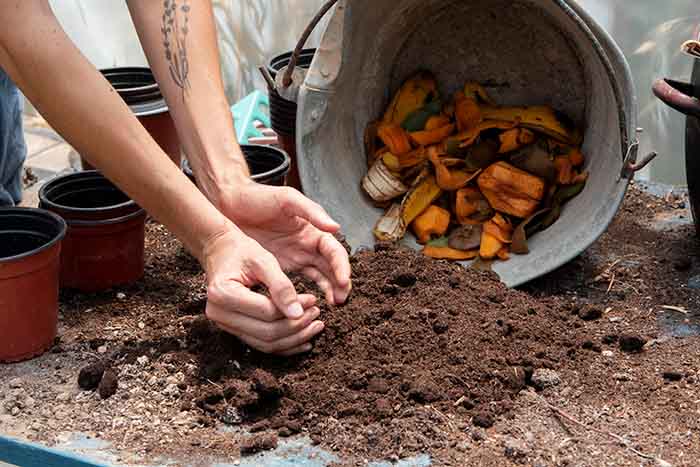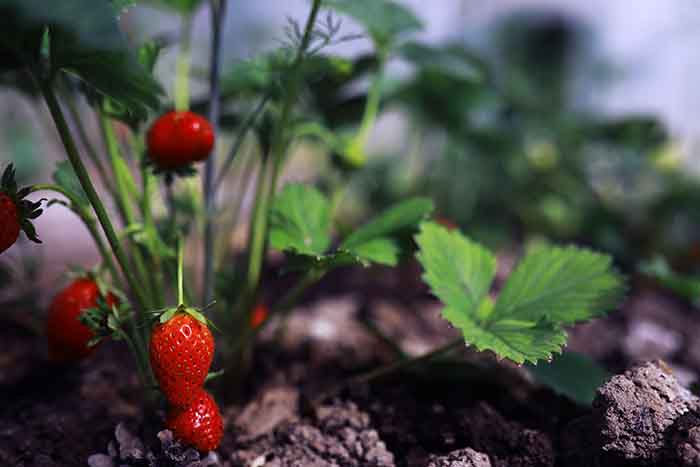New vegetable garden – how to start?
Vegetable soil preparation
Spring is the favorite season for all gardeners because we start preparations for new green garden beds in our backyards. Basically, every gardener knows their activities and how to direct them, but if you do not have previous experience in gardening and a new vegetable garden is unknown to you, let’s see the steps you need to take to start sowing in your first garden.
Source: Freepik.com
Author’s URL: www.freepik.com/prostooleh
The first step you need to take is the place where you will grow your vegetable garden. It takes up to 8 hours of sun a day to grow vegetables, so such a place should be sunny and well-drained.
Also, before you start work, the vegetable garden requires organization around the choice of materials to use, such as a spatula, rope, wooden sticks, or slats.
Removing grass and making loose soil
If it is a grassy area, you must first arrange it by digging the soil and making a loose layer of soil. You can make square plots of land by removing grass. You can do this by pushing a shovel under the grass to about 5 cm. You can use the grassy ground from the shovel to cover another garden part.
Digging the soil
Marked square land from which grass and weeds have been removed requires hoeing. A vegetable garden must have quality soil, and hoeing affects several factors in order to grow your vegetables as successfully as possible.
You can use a hoe for digging, but with forks, you can remove larger stones and remove deep weeds. Vegetable soil can be treated with the Irgot Stirrup Hoe, which can be used to chop the earth finely and prepare the soil before planting.
How to improve the quality of soil for a vegetable garden
The vegetable garden should be fertile in order to meet all the expectations. So, you will have to improve the soil before planting. As a beginner, you can also read our blog on improving land quality for the vegetable garden to have a successful yield through the optimal level of nutrients.
The best way to improve the structure of vegetable soil is to add organic matter
Manure
Manure is undoubtedly the best way to improve the soil, and the advice is to add manure barrels per square meter if it is highly neglected soil.
Remember that fresh manure is too sour, and therefore only rotten manure is used.
Compost
Unlike manure, you can always make compost by yourself by collecting kitchen waste, mowing grass, and the like. Mix the compost with the overturned soil, and the vegetable garden will be ready for sowing seeds and planting young vegetables, depending on the time of year.
Source: Freepik.com
Author’s URL: www.freepik.com/freepik
Chemical fertilizers
A vegetable garden can also succeed if you treat the soil with chemical fertilizers. However, this type of fertilizer is expensive, it can be used primarily as an incentive for soil quality, but this type of fertilizer will not improve the structure of the soil too much and will not help your vegetable garden to retain adequate moisture for plants.
Selection of vegetables for planting
If you are a beginner in the vegetable business, you will enjoy choosing vegetables for planting.
These can be simple carrots, zucchini, spinach, lettuce, onions, tomatoes, etc. Of course, there are two ways of planting: seed planting, which involves burying the seeds in the ground by planting bulbs and planting already formed thin seedlings such as tomatoes.
Vegetable planting plan and positions
The planting plan includes rotation, that is to say, the process of moving crops around the vegetable garden so that the vegetable garden has a chance to enable better growth and development of different plants. Rotating the growing position can help maintain nutrients in the soil, as well as control diseases and pests.
The vegetable garden requires you to follow the crop rotation plan
Also, certain plants do not have to rotate, and they can have a permanent space in the vegetable garden, such as strawberries.
Source: Freepik.com
Author’s URL: www.freepik.com/alexkich
When you start a new vegetable garden, you may want to grow vegetables that do not fit into any of the rotation groups.
Specific planting requirements
The plants that you plant in the vegetable garden have different requirements in terms of land selection and sunshine.
Following the rotation plans, make sure to make groups of vegetables so that each part of the garden has a little light during the winter months. If your plot is facing south, it is ideal for planting. The vegetable garden should have plenty of sun to overwinter certain crops such as garlic and onions. Some plants will be in the ground from the fall, so it is better to plant them in the sunnier parts of the garden.
House position and sunlight
If your house is facing east, it will have light throughout the day in both summer and winter. This way, you can rotate the crops from one quarter of the garden to another.
If the house is facing south, the conditions for the vegetable garden are ideal for the summer, and during the winter, it will be in the shade of the house for most of the day.
If you are still thinking about whether to go on an adventure called a vegetable garden, do not hesitate! Once you are convinced that such surfaces are helpful, you will have the opportunity to feed your family with organically grown vegetables. This activity is not a considerable effort, but you can relax because the vegetable garden brings great pleasure.



